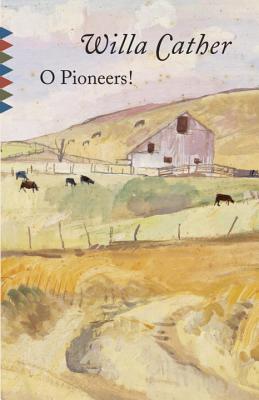By MIAH JEFFRA
Review by YELENA FURMAN
The city as a character in its own right is a frequent device in otherwise disparate novels. In Jeanette Winterson’s The Passion (1987), a water-shimmering, pleasure-seeking Venice forms the fabric of the female protagonist’s life. Andrei Bely’s modernist tour-de-force Petersburg (1916), following a long tradition in Russian literature, portrays this city as both the site and driver of the action. For the navel-gazing narrator of Marcel Proust’s In Search of Lost Time (1913-1927), Paris and other locations in France are integral sources of his copious memories. The commonality among such city-infused works is the reputation of said cities: world-renowned and possessed of their own symbolic capital and literary mythology. The associations are not always positive—writers often portray big cities as dirty, oppressive, even demonic—but the cities historically portrayed in literature are famed embodiments of grandeur and stature.
Not so in American Gospel by Miah Jeffra, a writer, academic, and cofounder and editor of Foglifter literary journal and press. The city whose praises the novel sings is Baltimore, characterized by one of the protagonists as “a long pit stop in the middle of some journey.” Yet while some of the characters view Baltimore in this negative light with good reason— the place is struggling economically and lacks the cultural accoutrements of urban metropolises—the novel itself makes a poignant case for Baltimore as possessing its own cultural ethos and potential for regeneration. American Gospel expands the corpus of city-based novels by centering an un-grand city and asserting its worthiness to be included in this tradition.
To be sure, Baltimore in American Gospel is a place long fallen on hard times. What was once a city of immigrants with a booming trade in shipbuilding and steel has become economically depressed and racially stratified. Comfortably-off white residents live in neighborhoods with restaurants and fancy coffee, while many Black residents and poor white ones, such as Ruth Cryer and her biracial teenaged son, Peter, two of the novel’s protagonists, live in Highlandtown, in crumbling housing on trash-lined streets, with parks too dangerous to venture into.
MacAllister, a white developer and Baltimore native, has a revitalization plan: demolish Highlandtown to build Crabtown, a “Baltimore-themed” amusement park that “would help bring people back to the Baltimore he loved.” Ruth and Peter’s apartment building would be torn down; the nearby Catholic high school and rectory, workplace and home of the third protagonist, Brother Thomas Manilli, Ruth’s friend and Peter’s history teacher, would be spared. The protagonists’ personal struggles unfold against this backdrop of impending destruction. Narrated in alternating chapters from the points of view of Ruth, Peter, and Thomas, American Gospel is an homage to Baltimore and its residents, who like their city, are both flawed and resilient.
Moving to Baltimore from Tennessee with her family after her father loses his farm, Ruth dreams of returning to her home state, given her disastrous life in Baltimore. Financially strapped, she is on the run from Isaac, her second husband and Peter’s stepfather, whose violent attack on her older son, Joby, forced the boy to leave home, resulting in his getting killed in hazy but possibly drug-related circumstances. The fact that she stayed with Isaac for a long time after this attack drives a hard wedge between her and Peter, who loves her profoundly but resents her for what he sees as her passivity and cowardice. Although she finally does leave after a particularly violent attack against her, she frequently changes addresses to outrun her abuser, providing a radically unstable home life that Peter also resents. At the same time, Ruth is self-aware and full of regret about how her choices have affected her son: as she says, “I wish I could tell Peter sorry for all this and everything, for the running every few months, for the shitty apartments, for Joby leaving, for me staying with Isaac too long. But Peter and I don’t say sorry to each other.”
With the help of her sister, who lives nearby, and turning to Thomas for occasional advice and support, she attempts to carve out a safe place for the child she loves deeply. Yet not only is their apartment building slated to be demolished, but more menacingly, Isaac discovers where she lives, making her home a literal danger zone. When the police prove useless in helping her, she engineers a plan for her own kind of justice, with her plotline suspensefully building toward its climax. Her decision is questionable, as are Peter’s subsequent actions on her behalf. But it is organic to the situation and stems from the desire to finally make things better for herself and both of her children, the one who is alive and the one whose death she wants to avenge. Although Ruth temporarily returns to her beloved Tennessee, her attempt to rid herself of Isaac entrenches her in Baltimore. Yet despite the physical restriction, she finally achieves what she has sought: as she tells her son, “I’m free, Peter.”
Peter, for his part, dreams of “getting out of this choking, tight little Baltimore life” and going to college in New York. In addition to dealing with familial dysfunction and the loss of his older brother, Peter feels like a perpetual outsider. A star student at his private Catholic high school, which he attends for the education rather than out of religious conviction, he clashes with his teachers, getting suspended after an in-class disagreement about doctrine. Unlike the mostly wealthy, white student body, he is one of “the small handful of Black and Brown kids at St. Mary’s, most [of whom] are part of the scholarship program.” The biggest sense of alienation comes from having to hide that he’s gay, both from his Catholic high school and, because he isn’t aware that she knows, from Ruth. In one of the novel’s darkly comedic moments, the one person to whom Peter confides his sexual feelings is a statue of the Virgin Mary standing in a grotto on school grounds. As he admits, “I know it’s ridiculous talking to a statue, but that’s it—no judgment, no response. Everyone else has a fucking opinion.” The statue might offer an opinion if she could. In a variant on Ruth’s relationship fiascos, Peter’s sexual interactions consist of picking up men at the local dive bar, the most recent of whom is a demo guy employed to tear down Highlandtown and who throws him out of his apartment when Peter suggests going on an actual date.
Peter’s attempt at a relationship with Jude, a fellow student, music lover, and troubled soul, ultimately changes his relationship with his home city. Yearning for Jude with the intensity of a teenager’s first love, Peter acts on his wish-fulfillment theory of “I think he’s gay; he just doesn’t know it yet.” This sets off a disastrous chain of events, including a mordantly funny episode involving spilled Eucharist wafers at a school assembly and an ill-fated trip to his longed-for New York, which turns out to be “like everything else—unwilling to have me.” Upon his return to Baltimore, he unexpectedly discovers a community and the scope of Baltimore’s potential. “Baltimore is an art city,” his friend, newly moved there to study painting, tells an incredulous Peter, who moves toward a fragile sense of belonging (whether this change reflects a newfound maturity or an adjustment to circumstances is up to reader interpretation).
The third narrative voice belongs to Thomas, who, as a history teacher, is the spokesperson for Baltimore’s notable past and its future possibilities. Abandoned by his mother as a child, following the death of his father he has spent his life within narrow parameters, joining the church at a young age and now living with others like him on the grounds of the Catholic school where they teach. He has drifted through life, including in terms of his profession, which is less a religious calling than something he fell into and “can’t remember why, or even when that choice was made.” Beset by a crisis of faith, he nevertheless cannot decide whether to stay in the church, just as he cannot decide whether to take his estranged mother off life support, abdicating this decision the way he’s abdicated responsibility for his own life.
Thomas’s transformation is integrally tied to his becoming involved, via another clergy member, in a community effort to stop Crabtown’s construction, which pits him against the others in his order who believe in MacAllister’s revitalization rhetoric. Determined to finally do something to help, he turns over the house his mother bequeathed him, which as a clergy member he cannot own, to a Black single mother whose own home is scheduled for demolition. Yet the problem is much bigger, and when a protest against Crabtown that he attends turns violent, it sweeps Baltimore into chaos and destruction, including the formerly safe space of the Catholic school. The violence, however, turns out to be redemptive: a cleansing of what came before, it propels him into a new life, and an impromptu family that’s finally of his own making.
It is a testament to Jeffra’s nuanced storytelling that a novel about economic and racial divides does not proceed along predictable lines: here, the downtrodden have their faults, while the developer, as Thomas acknowledges, has “a sincere love for the city,” even as their understanding of this concept differs radically. The narrators—a young, gay man, a domestic abuse survivor, a priest with a crisis of faith—give voice to non-standard representation and cohere within the novel while remaining distinct. The writing is sharp, often humorous, coming through, for example, in Peter’s loving laments about his troubled relationship with Ruth: “That’s the great distinction between Ma and me. She is southern to the bone, and me, I’m a northerner. We would have been an awesome Civil War parable.” It is also deeply sympathetic to human imperfections. Ruth’s life, as she herself admits, “has been filled with short-term leases and visits and all these things that don’t really stay with you.” Nevertheless, she has a chance for a different future: as she says, “[t]his is where my new story begins,” a sentiment that applies to both Peter and Thomas, as well.
Despite the gravity of the characters’ situations and the plight of their city, American Gospel is a profoundly hopeful novel. As Peter fixes the statue of Mary he has damaged in anger, he thinks, “Baltimore is a broken city, but I have realized that which is broken has beauty, a fierce beauty with sharp edges that begs for repair.” American Gospel is infused with the possibility of repair for both people and places, a secular hymn to coming undone but never giving up.
Yelena Furman lives in Los Angeles and teaches Russian literature at UCLA. Her articles, book reviews, and short stories have appeared in various venues, including The Los Angeles Review of Books, The Baffler, Narrative, The Willesden Herald, and Roi Fainéant. She and Olga Zilberbourg co-run Punctured Lines, a feminist blog on post-Soviet and diaspora literatures.





